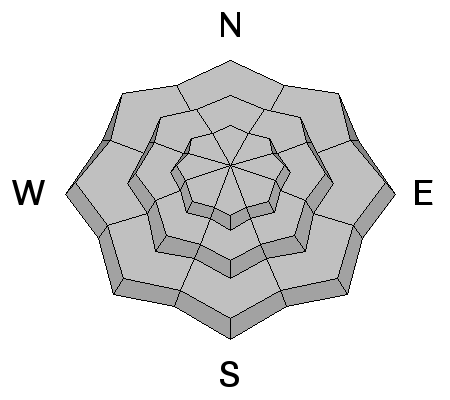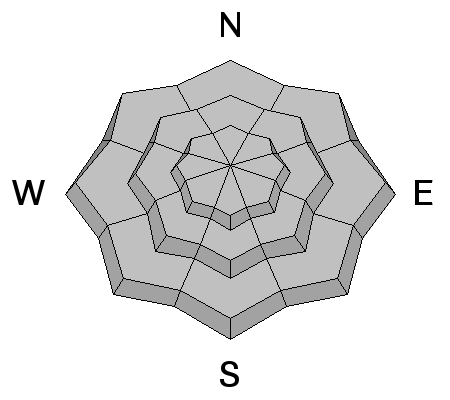Forecast for the Ogden Area Mountains

Wednesday morning, April 1, 2015

No, this is not an April Fools Day joke. When I look out my window at the skimpy snow left in the mountains and see green grass and leaves on the tree in my yard I'm convinced it's mid May. Then I look at my calendar and I think someone is messing with me. But sadly not. Thus, we have quit issuing avalanche advisories for the season--a full month earlier than normal. I will, however, continue to post your observations each day as long as they keep coming in, so if you're getting out, you can let everyone in our community know what you find and I will do the same. Also if we get especially dangerous conditions from a spring storm or a rapid thaw, I may issue an avalanche warning through the National Weather Service.
This does not mean the end of avalanches. Spring storms and warm temperatures may make avalanche danger rise. If you scroll down, I provided some general avalanche advice to follow for typical spring weather patterns and I provide a series of other links you can use for current conditions and mountain weather.
First, I have a long list of people to thank:
Visit the Snow Page to see all the automated weather stations and web cams in the mountainous areas of Utah. Also, I will continue to post Observations each day, so please share what you find with everyone else in our mountain community. You can submit an observation by clicking HERE or fill out the form from our home page.

Here is some general avalanche advice for spring. As my live-in, 98-year-old mother-in-law from the Czech Republic says, "Spring is a fight between winter and summer." In the mountains, this means that spring weather alternates between winter snow storms and summer wet avalanches when it heats up between storms. So first for wet avalanche advice:
Snow does not like rapid change, and when cold, dry snow becomes wet for the first time, it almost always means wet sluffs (loose snow that fans outward as it descends) and occasional wet slabs. Also, slabs can involve old snow when melt water percolates through a layered, winter snowpack for the first time especially after 3 days of strong melting combined with no refreeze at night. Luckily, wet avalanches usually don't last forever because after a few days of percolating melt water, all the layers in the snow disappear and the snow becomes homogenous and dense, turning into a stable summer-like snowpack. Typically, this cycle of instability maturing into stability occurs first on the south facing slopes in early spring, then progresses to the east and west facing slopes in mid spring and finally by late spring, the upper elevation north facing slopes go through a wet avalanche cycle. Finally, glide avalanches occur regularly in spring as the entire snowpack slides slowly on the ground like a glacier until they suddenly release into a full-depth avalanche. These occur regularly on steep rock slabs and occasionally on steep grassy slopes. Notorious glide avalanche locations include places Stairs Gulch or the rock slabs in Broads Fork, which you should always avoid in spring. Avoid crossing under any slopes with telltale glide cracks in the snowpack. Remember they come down randomly, even at night.
The bottom line for wet avalanches:
Get out early and get home early. Get off of--and out from underneath--any slope approaching 35 degrees or steeper when the snow becomes wet enough to not support your weight. Warning signs may include:
Any of these signs mean it's time to head home, or at least change to an aspect with cooler snow. Remember, even "smaller" slides can be dangerous in high-consequence terrain, such as above a terrain trap, trees, rocks, cliffs or a long, large avalanche path. Plan your trip to have a safe exit back to the car. (You can always click on the "I" button next to the avalanche problem icon for more information.)

We almost always get several winter-like snow storms in April and May. Treat each storm just like you would in winter. Avalanches can occur within the new snow typically from 1) low density layers deposited during the storm, 2) high precipitation intensity during a storm and 3) from wind slabs created during the storm. It's easy to test the new snow as you travel by jumping on small test slopes to see if they avalanche or just dig down with your hand to see how well the new snow is bonding. Snow can change dramatically in both space and time so never let your guard down. Especially avoid any steep slope with recent wind deposits, which are almost always dangerous.
Finally, remember after each ski resort closes for the season they no longer perform avalanche mitigation with explosives, so treat it just like backcountry terrain. Each spring several close calls and occasional fatalities occur at ski resorts closed for the season. Steep slopes at ski resorts are safe all winter ONLY because of regular avalanche mitigation with explosives so after the resort closes it instantly becomes backcountry. It's hard to get your head wrapped around the fact that a slope that has moguls all winter can be dangerous avalanche terrain when the resorts are closed. Practice usual backcountry protocol, go one at a time, never travel above other people and practice all the usual risk reduction measures and low-risk travel ritual you learn in avalanche classes. We've had 3 tragic fatalities this season in Utah. We don't need more.
Here are my favorite links for mountain weather:
The good-old National Weather Service forecast is, hands-down, the best forecast you can find. For instance, HERE is one for Alta and you can go to the map and click on any region of Utah to create a customized forecast for that 1-mile square area. While you're on the page, you can click on the satellite loop, the radar loop or--my favorite-- the graphic display of hourly weather for that area.
A couple other more geeky links I like include:
The University of Utah Department of Meteorology products such as the Time-Height plots. (Time is on the horizontal axis and runs from right to left and the height of the atmosphere is on the vertical axis.) Yep, it's pretty geeky, but it is a very powerful weather display.
For maps, I like the Penn State display of various maps.
Remember your information can save lives. If you see anything we should know about, please participate in the creation of our own community avalanche advisory by submitting snow and avalanche conditions.
If you trigger an avalanche in the backcountry - especially if you are adjacent to a ski area – please call the following teams to alert them to the slide and whether anyone is missing or not. Rescue teams can be exposed to significant hazard when responding to avalanches, and do not want to do so when unneeded. Thanks.
Salt Lake and Park City – Alta Central (801-742-2033)
Benefit the Utah Avalanche Center when you shop from Backcountry.com or REI: Click this link for Backcountry.com or this link to REI, shop, and they will donate a percent of your purchase price to the UAC. Both offer free shipping (with some conditions) so this costs you nothing!
Benefit the Utah Avalanche Center when you buy or sell on ebay - set the Utah Avalanche Center as a favorite non-profit in your ebay account here and click on ebay gives when you buy or sell. You can choose to have your seller fees donated to the UAC, which doesn't cost you a penny.

This information does not apply to developed ski areas or highways where avalanche control is normally done. This advisory is from the U.S.D.A. Forest Service, which is solely responsible for its content. This advisory describes general avalanche conditions and local variations always exist.